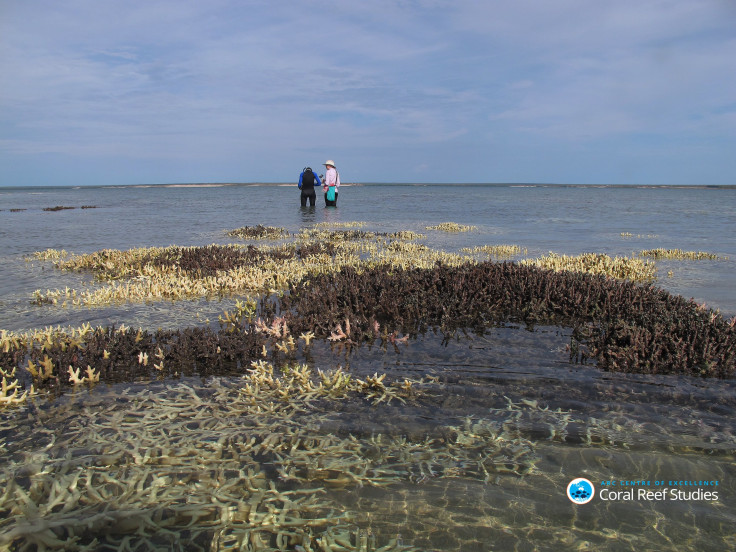Great Barrier Reef Bleaching Has Killed 35% Of Corals In Central, Northern Regions

Last month, researchers from Australia’s ARC Centre of Excellence for Coral Reef Studies found that 93 percent of the 1,400 mile-long Great Barrier Reef — the world’s largest living structure — had been affected by some level of bleaching. Scientists from the centre have now estimated that this bleaching event — the worst in its history — has killed 35 percent of corals in its northern and central parts.
“We found on average, that 35 percent of the corals are now dead or dying on 84 reefs that we surveyed along the northern and central sections of the Great Barrier Reef, between Townsville and Papua New Guinea,” Terry Hughes, director of the ARC Centre, said in a statement released Monday. “Some reefs are in much better shape, especially from Cairns southwards, where the average mortality is estimated at only 5 percent.”
Coral reefs, which are delicate marine biodiversity hotspots where corals grow in symbiosis with algae, become bleached when they are stressed — due to a rise in ocean temperatures, acidity, or both, which expels the symbiotic algae living in corals’ tissues, causing them to turn completely white.
Over the past two years, corals in the Great Barrier Reef — a fragile biodiversity hotspot that consists of nearly 3,000 individual reefs — have come under increasing stress from climate change-induced ocean warming and the El Niño weather phenomenon.
JCU scientists estimate bleaching has killed 35% of corals on the northern and central GBR.https://t.co/31w5vFIMwG pic.twitter.com/DUUd22DiyS
— James Cook Uni (@jcu) May 30, 2016
“This year is the third time in 18 years that the Great Barrier Reef has experienced mass bleaching due to global warming, and the current event is much more extreme than we’ve measured before,” Hughes said in the statement. “These three events have all occurred while global temperatures have risen by just 1 degree C above the pre-industrial period. We’re rapidly running out of time to reduce greenhouse gas emissions.”
The good news is that about 95 percent of the corals in the southern parts of the iconic structure have survived, largely due an unexpected drop in ocean temperatures caused by tropical cyclones. However, the stress from bleaching is expected to keep their reproduction and growth rates low.
“Fortunately, on reefs south of Cairns, our underwater surveys are also revealing that more than 95 percent of the corals have survived, and we expect these more mildly bleached corals to regain their normal colour over the next few months,” Mia Hoogenboom, also from the ARC Centre, said in the statement.
© Copyright IBTimes 2025. All rights reserved.






















